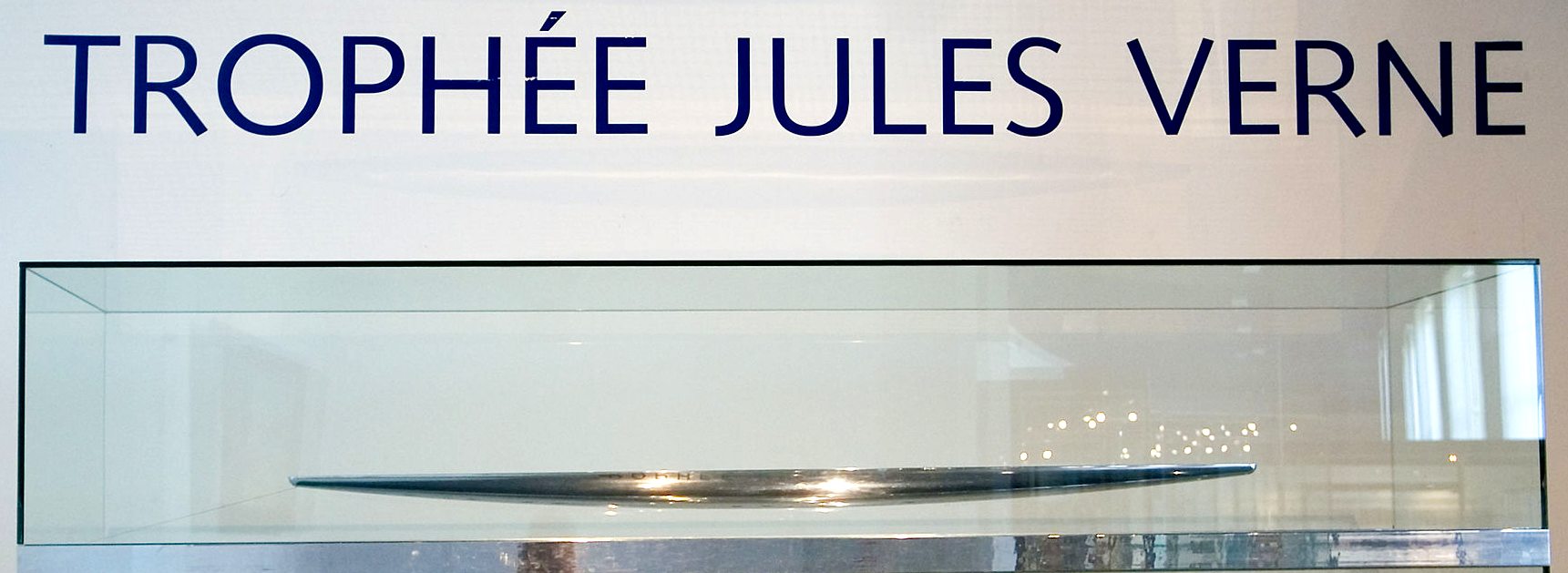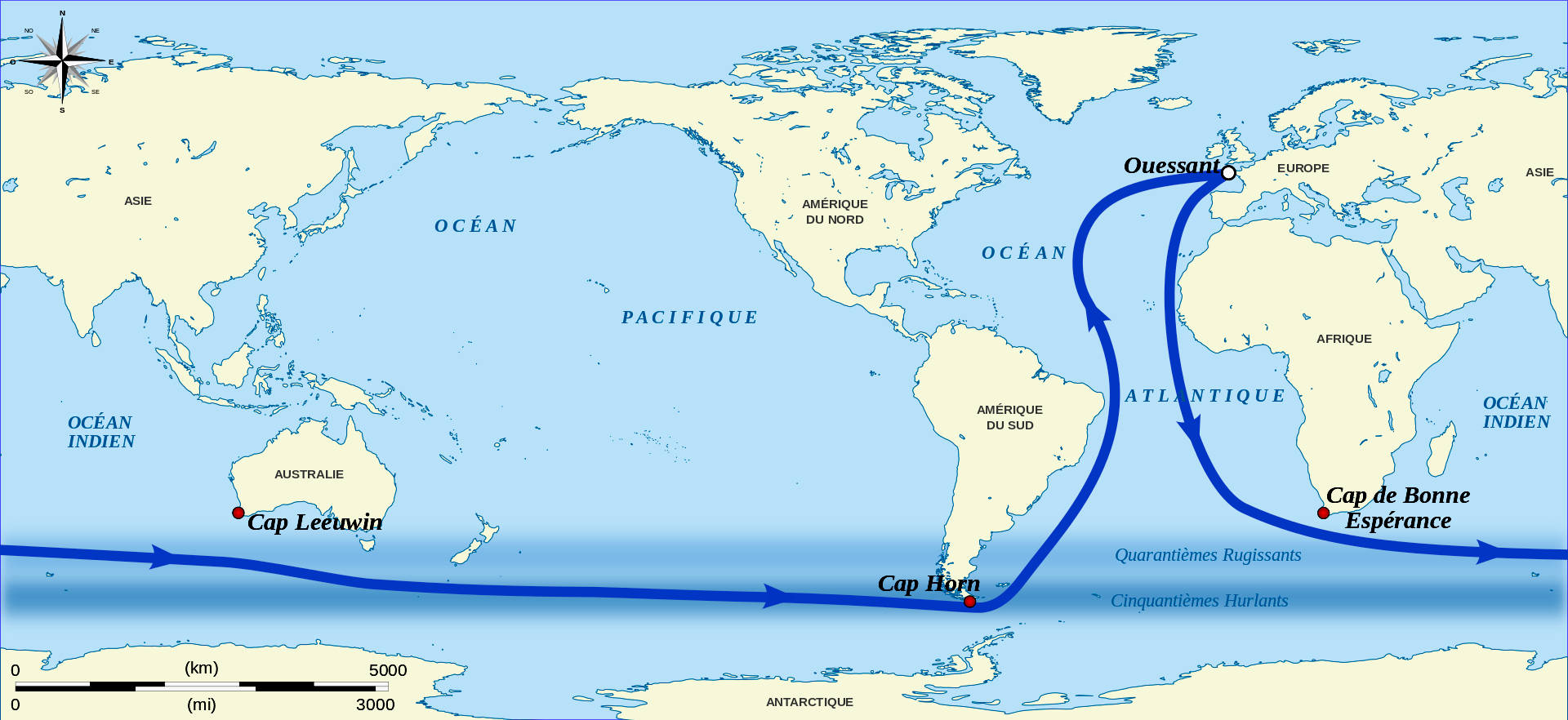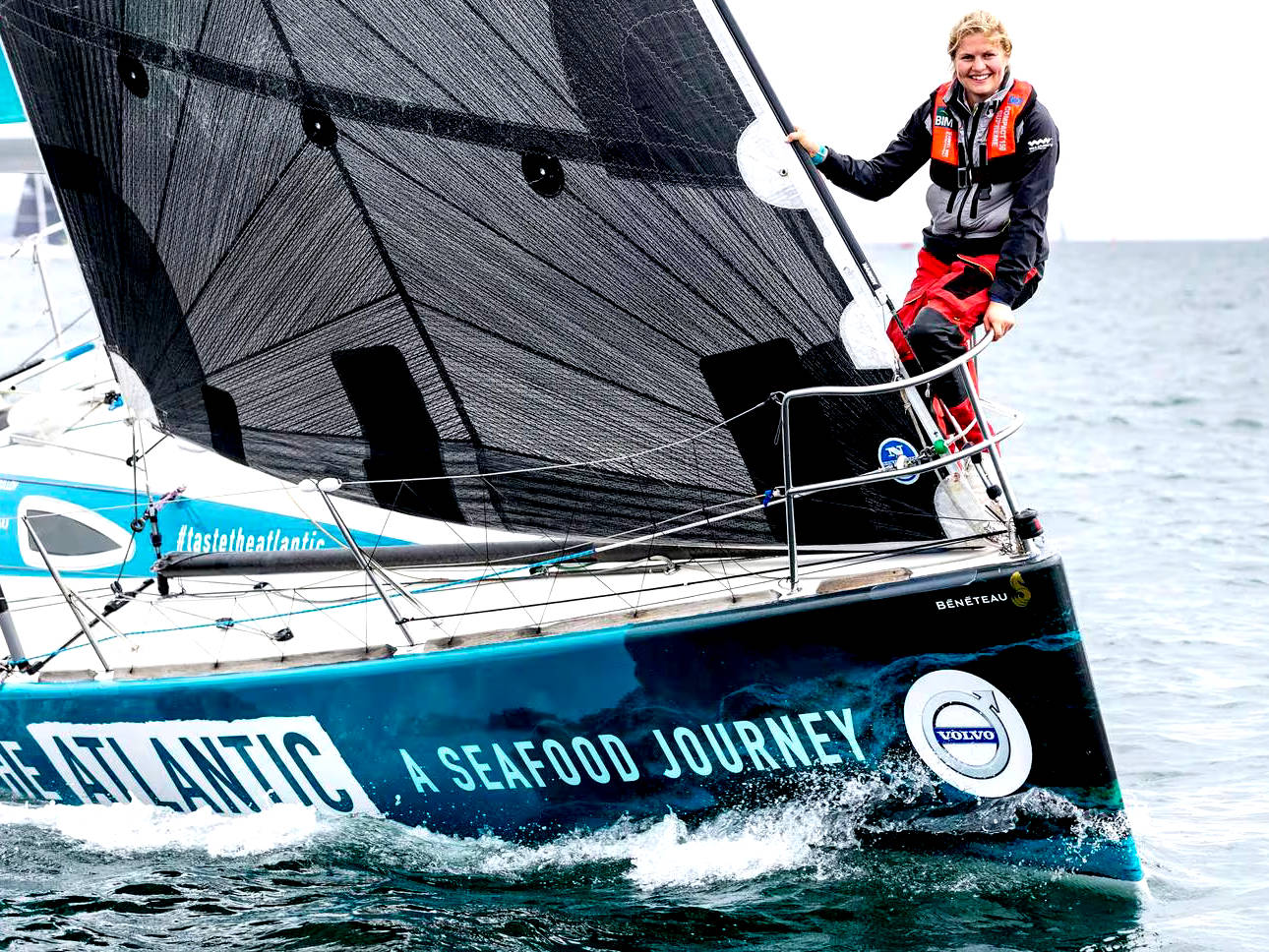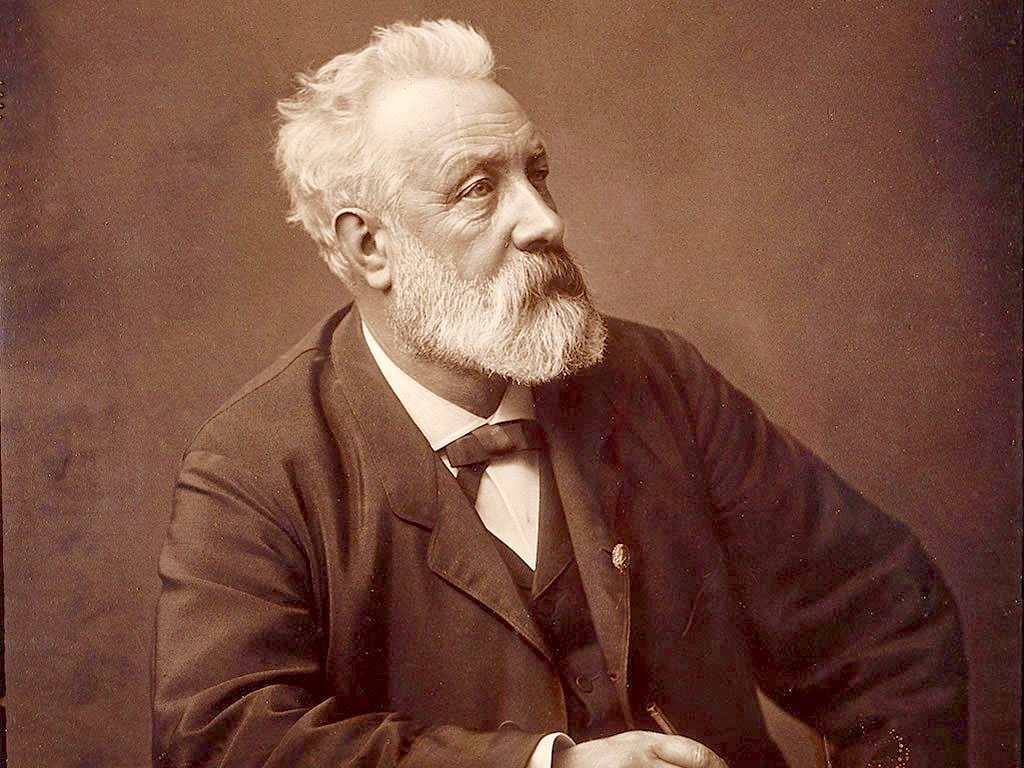|
JULES VERNE TROPHÉE (SAILING)
SAILING YACHTS CIRCUMNAVIGATION RECORDS
Please use our A-Z INDEX to navigate this site or return HOME
|
|
|
SAILING RACE: The official language of the “Jules Verne Trophy” is French. The French version of these rules shall prevail over any other version in other languages.
|
|
|
|
|
In Around the World in Eighty Days, Jules Verne's protagonist, Phileas Fogg, proffered that a man could circumnavigate the globe in under 80 days, by way of a wager. This wonderful work of fiction inspired a group of sailors to offer a trophy for the fastest sailing yacht to circumnavigate the world. A fee is payable for entry by any potential competitor, who must adhere to the rules - that are very broad - the concept being to promote, rather than restrict yacht innovation.
Yacht racing did little to improve the performance of commercial cargo or cruise ships, until sail power was again brought back into play as a way of reducing heavy diesel oil bunker fuels. With Formula 1 in motorsport, the developments slowly trickled down to our family hatchbacks, but not to heavy goods vehicles. The sails used on commercial ships may well benefit from research into making yachts go faster, but hydrofoils are thought to be out of the question for such heavy craft, being impractical.
The one thing not in favour of sail, is keeping to schedules. Records that are set by sail, are in exceptional weather conditions. When it comes to keeping time regularly, motorized vessels seem to be the only way.
The original idea for
the French competition has been attributed to Yves Le Cornec in 1985. The rules were defined in 1990. A committee was
subsequently put in place to guarantee respect of the rules and
fair play. This committee included Peter
Blake, Florence Arthaud, Jean François Coste, Yvon Fauconnier, Gabrie Guilly,
Robin
Knox-Johnston, Titouan Lamazou, Yves Le Cornec, Bruno Peyron, Olivier de Kersauson, and Didier Ragot.
In essence, the rules for the Jules Verne Trophy are to navigate the fastest time around the world using any type of sail propelled yacht with no restrictions on the size of the crew, starting and finishing from the exact line between the Le Créac’h Lighthouse off the tip of Brittany and the Lizard Point in Cornwall.
The event was first won in 1993. All nine winners have been either catamarans or trimarans. The current challenge is to beat the record time of 40 days 23 hours 30 minutes and 30 seconds set by Francis Joyon and crew on the 31.5m IDEC Sport in 2017.
LIST
OF TROPHY HOLDERS:
LIST OF ATTEMPTS:
2025 - Alexia Barrier / The Famous Project - CIC and IDEC 2023 - Charles Caudrelier & Franck Cammason / 2nd attempt - Maxi Edmond de Rothschild 2021
- Charles Caudrelier / Gitana Team 1st attempt - Maxi Edmond de Rothschild & Franck
Cammas
CURRENT
(2016-2017) RECORD HOLDER
Other records broken during the 2016 campaign
• 6 consecutive days at an average of 850.7 miles / 24 h (35.45 knots)
• Ushant-Cape Leeuwin 17 d 06 h 59 min 45 (time of Loïck Peyron during the 2011 record: 17 d 23 h 57 min)
• Ushant-Tasmania 18 d 18 h 31 min (time of Loïck Peyron during the 2011 record: 20 d 07 h 11 min)
• Ushant-Antiméridien 20 d 07 h 01 (time of Loïck Peyron during the 2011 record: 22 d 11 h 34 min)
• Ushant-Cape Horn: 26 d 15 h 45 min (time of Loïck Peyron during the 2011 record: 30 d 22 h 19 min)
• Ecuador - Cape Leeuwin: 11 d 12 h (time of Loïck Peyron during the 2011 record: 12 d 9 h 2 min)
• Cape Agulhas-cape Leeuwin in 4 days 9 h 37 min 46 at an average speed of 35.08 knots over ground (3,705 miles) or 842 miles in 24 hours (6 days 8 min or 36% more for Loïck Peyron's previous record)
• Cape Leeuwin - Cape Horn in 9 d 08 h 46 min (12 d 22 h 22 min or 38% more for Loïck Peyron's previous record)
• Cape of Good Hope - Cape Horn in 13 d 20 h 13 min (19 d 00 h 31 min or 37% more for Loïck Peyron's previous record)
• Cape of Good Hope - Cape Leeuwin: 4 d 11 h 31 min (6 d 02 h 09 min or 36% more for Loïck Peyron's previous record in 2011)
• Cap Leeuwin - Cape Horn in 9 d 08 h 46 min (12 d 22 h 22 min or 38% more for Loïck Peyron's previous record)
• Indian Ocean: 5 d 21 h 7 min 45 s (WSSRC reference) (8 d 07 h 23 min or 41% more for Loïck Peyron during the 2011 record)
• Pacific Ocean: 7 d 21 h 13 min 31 s (WSSRC reference) (10 d 15 h 07 min or 39% more for Loïck Peyron during the 2011 record)
• Ecuador-Ecuador record: 29 d 9 h 10 min 55 s (WSSRC reference) (32 d 11 h 52 min or 11% more for Loïck Peyron during the 2011 record)
• North Atlantic return record: 5 d 19 h 21 min (7 d 10 h 58 min or 25% more for Loïck Peyron during the 2011 record)
RECORD FACTS
OTHER SAILING EVENTS:
Sunday Times Golden Globe Race Whitbread Round the World Race Whitbread Round the World Race
The Jules Verne
Trophée is awarded to the challenger who breaks the previous Jules Verne record of the round the world voyage under sail. The winner holds the trophy until such time as his/her record has been bettered. The boats must solely be propelled by natural forces of the wind and of the crew, but the trophy is open to any type of boat with no restrictions. Crew size is not restricted either.
CONTACTS
ASSOCIATION TOUR DU MONDE EN 80 JOURS Email: contact@tropheejulesverne.org
LINKS & REFERENCE
https://www.tropheejulesverne.org/en/ https://www.tropheejulesverne.org/en/
|
|
|
|
|
|
Please use our A-Z INDEX to navigate this site
This website is Copyright © 2023 Jameson Hunter & Cleaner Ocean Foundation Ltd, equal opportunities companies. This website is carbon friendly, using less energy to load on average per page via simplicity & picture optimization. The same may not apply to third party links. 'Jules Verne Hydrogen Trophy' ™is a trademark, the paternal rights asserted by COF Ltd. All rights reserved.
|



